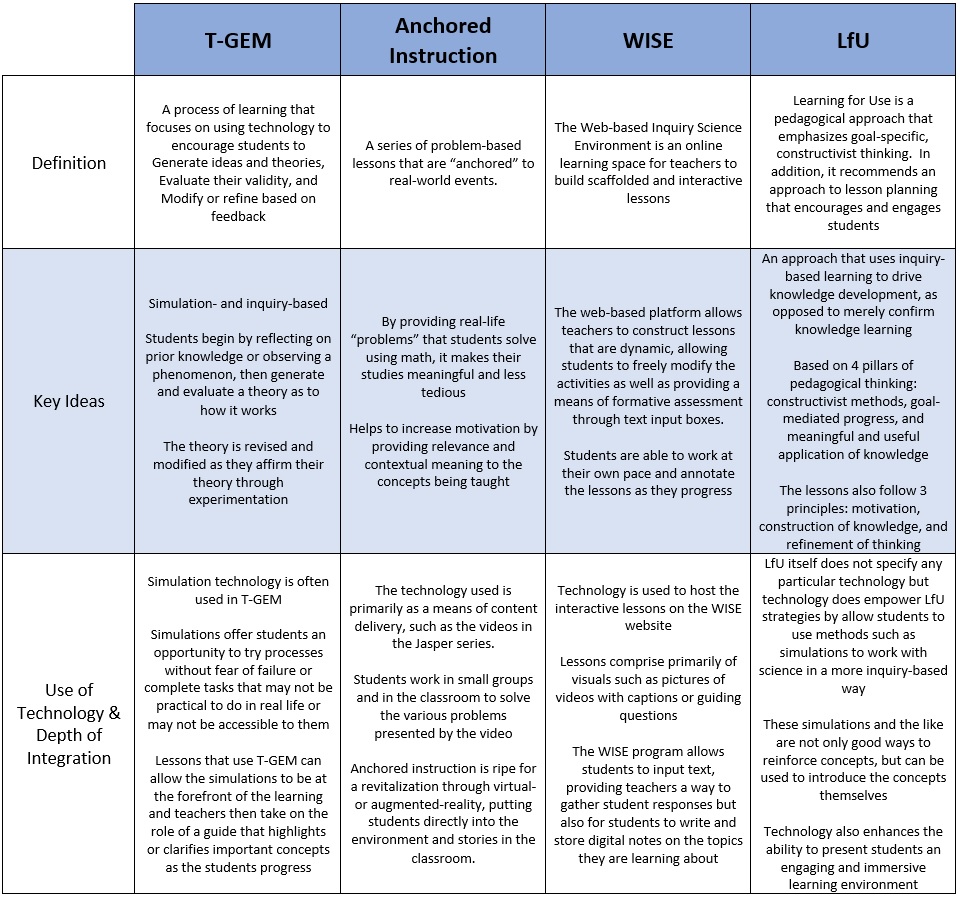The past few weeks has been enlightening for me with regards to seeing the range of TELE’s available and the possibilities of their integration. I summarised my understanding of them in the table below, with particular reflection on how they each used technology as well as the depth of which they used technology. I felt it was important to consider how much of a learning environment the technology contributes to, as it provides some sense as to what a teacher’s role may become in that environment. For example, a WISE-based learning environment can become the primary lesson type for a unit, which allows more student independence in their learning. If this is the case, then the teacher takes on more of a guidance role. On the other hand, Anchored Instruction, using the Jasper series as an example, only uses technology as a means of content delivery and much of the student work will take place in a more traditional classroom setting.

Technology in the classroom can take many forms, from secondary or even tertiary roles of content delivery to primary roles of create an immersive learning environment. Looking at T-GEM, WISE, Anchored instruction, and LfU, it is clear that technology’s breadth of abilities translates into an equally broad spectrum of possible uses. While each method provides its own unique advantages and benefits to learning, I find myself aligning mostly with the T-GEM and LfU approaches, which are both inquiry-based methods that leverage simulations in order to demonstrate phenomena to students. In both, there are constructivist components that require students to formulate and refine theories as they progress deeper into the concepts. With science in particular, the inquiry-based approach to understanding the world underlies the scientific method and there is enormous benefit to having students hone this skill through their science career.
The other advantage is that technology provides an alternative to complex and/or expensive lab experiments. In a traditional classroom, labs and demos are limited by the resources that a teacher can access. But with technology, simulations can bring the labs and demos to the students in a cost effective and accessible way so that students can experience the science. These approaches help to expand a teacher’s available tool set.
Hi Lawrence,
Great summary chart of the four pedagogies. I like that you expressed you would favour T-GEM and LfU, which I neglected to do in my post. I think that I too would likely favour T-GEM as it really promotes the use of technology to support the scientific method (and namely the cyclic pattern of generate, evaluate and modify).
I’m still curious towards your second advantage – that “technology provides an alternative to complex and/or expensive lab experiments.” While I agree that this is the case for those labs that are too expensive or not easily accessible, I still wonder about the comparisons of effective learning between simulations in general and a practical lab experiment. I wonder if provided the choice, which would students choose and which would they benefit more from.
Thanks for the post,
Darren